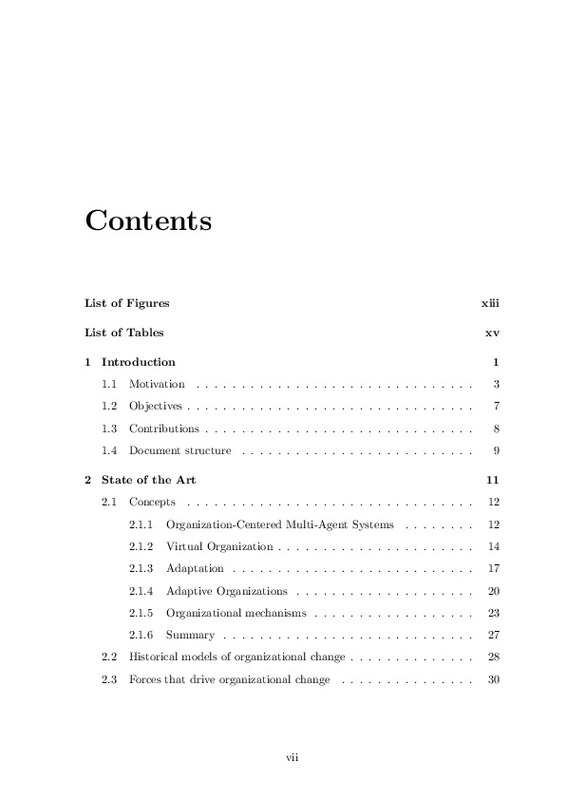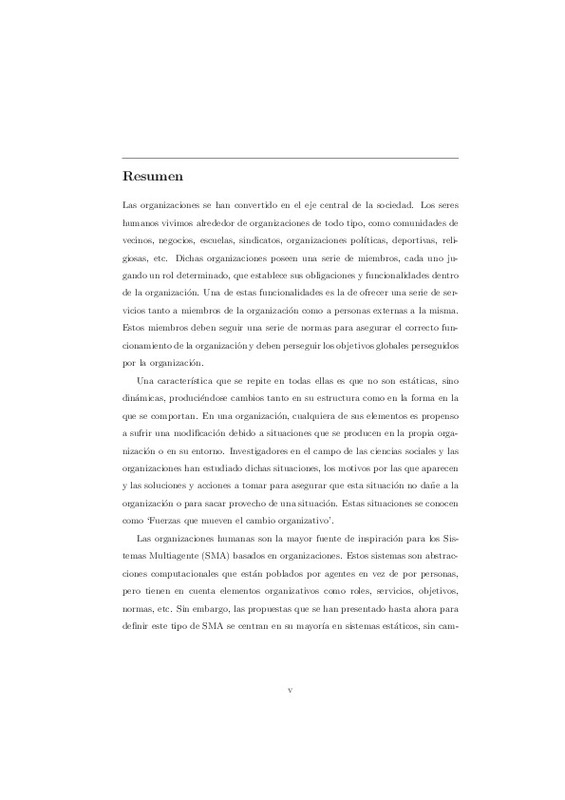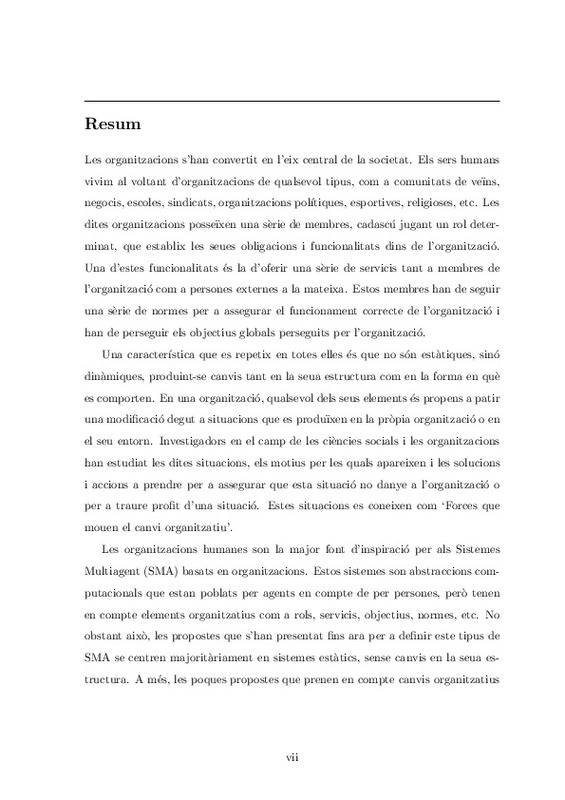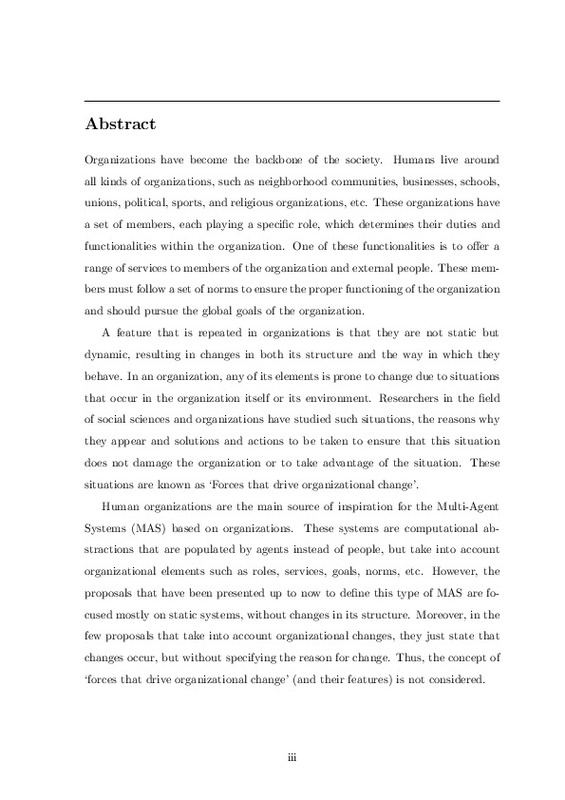|
Resumen:
|
Organizations have become the backbone of the society. Humans live around
all kinds of organizations, such as neighborhood communities, businesses, schools,
unions, political, sports, and religious organizations, etc. ...[+]
Organizations have become the backbone of the society. Humans live around
all kinds of organizations, such as neighborhood communities, businesses, schools,
unions, political, sports, and religious organizations, etc. These organizations have
a set of members, each playing a specific role, which determines their duties and
functionalities within the organization. One of these functionalities is to offer a
range of services to members of the organization and external people. These members
must follow a set of norms to ensure the proper functioning of the organization
and should pursue the global goals of the organization.
A feature that is repeated in organizations is that they are not static but
dynamic, resulting in changes in both its structure and the way in which they
behave. In an organization, any of its elements is prone to change due to situations
that occur in the organization itself or its environment. Researchers in the field
of social sciences and organizations have studied such situations, the reasons why
they appear and solutions and actions to be taken to ensure that this situation
does not damage the organization or to take advantage of the situation. These
situations are known as ‘Forces that drive organizational change’.
Human organizations are the main source of inspiration for the Multi-Agent
Systems (MAS) based on organizations. These systems are computational abstractions
that are populated by agents instead of people, but take into account
organizational elements such as roles, services, goals, norms, etc. However, the
proposals that have been presented up to now to define this type of MAS are focused
mostly on static systems, without changes in its structure. Moreover, in the
few proposals that take into account organizational changes, they just state that
changes occur, but without specifying the reason for change. Thus, the concept of
‘forces that drive organizational change’ (and their features) is not considered.
Therefore, the objective of this PhD thesis is to translate the knowledge of the
forces that drive organizational change available in human organizations to MASbased
organizations. These forces will be formally expressed with the factors that
help to detect them. The solutions to be taken when a force is detected will also
be presented. To correctly perform this task, a formalization for virtual organizations
is designed, named Virtual Organization Formalization (VOF). Moreover,
the Artifacts for Organizational Mechanisms are proposed, which are a tool to
help in the representation of organizational knowledge and in the modeling of the
environment of the organization. This tool is based on the Agents & Artifacts
(A&A) framework.
[-]
|













